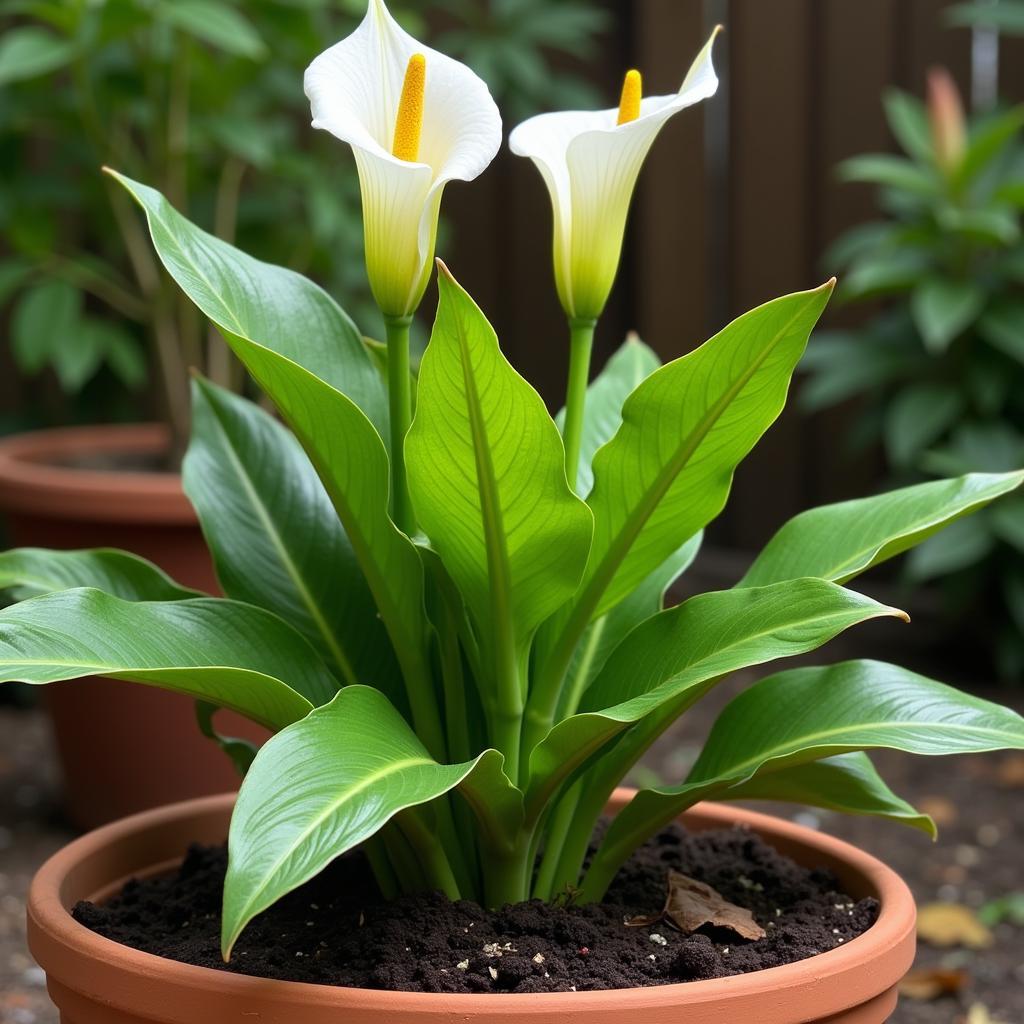The Dead Horse Arum Lily (Helicodiceros muscivorus), with its intriguing name and unique characteristics, is a fascinating plant that often sparks curiosity. This article will delve into the captivating world of this unusual arum lily, exploring its peculiar features, growth habits, and care requirements.
Understanding the Dead Horse Arum Lily: More Than Just a Name
The dead horse arum lily earns its rather morbid name from the pungent odor it emits, which is often described as resembling the smell of rotting flesh. This scent, however unpleasant to us, serves a crucial purpose: attracting pollinators, primarily flies, which are drawn to the smell of decay. This clever strategy ensures the plant’s continued survival.
The Science Behind the Smell
The “dead horse” smell is a result of specific sulfur-containing compounds produced by the plant during its flowering phase. This olfactory trickery is combined with a thermogenic process, where the plant generates heat, further enhancing the illusion of decomposition and attracting flies.
Cultivating the Dead Horse Arum Lily: Tips and Tricks
While the dead horse arum lily might sound intimidating, it’s surprisingly easy to cultivate with the right approach. These plants thrive in well-draining soil and prefer a sunny or partially shaded location.
Watering and Fertilizing
Water regularly during the growing season, allowing the soil to dry slightly between waterings. Overwatering can lead to root rot, so ensure proper drainage. Fertilize occasionally with a balanced liquid fertilizer to promote healthy growth.
Dealing with the Smell
The infamous smell is most potent during the initial flowering period, typically lasting a few days. If the odor is too overwhelming, consider placing the plant in a well-ventilated area or outdoors during this time.
 Dead Horse Arum Lily Growing in a Pot
Dead Horse Arum Lily Growing in a Pot
The Dead Horse Arum Lily: A Conversation Starter
The dead horse arum lily is undoubtedly a unique and fascinating addition to any plant collection. Its unusual appearance and pungent aroma make it a conversation starter and a testament to the diverse wonders of the plant kingdom.
Beyond the Smell: Appreciating its Beauty
While the smell might be its most notorious feature, the dead horse arum lily also possesses a striking appearance. Its deep maroon spathe and prominent spadix add a touch of the exotic to any garden.
Conclusion: Embracing the Unusual with the Dead Horse Arum Lily
The dead horse arum lily, with its unusual characteristics and captivating life cycle, offers a fascinating glimpse into the world of plant adaptation and survival. Despite its pungent aroma, this unique plant is a rewarding addition for adventurous gardeners seeking something truly extraordinary. So, embrace the unusual and consider adding the dead horse arum lily to your collection.
FAQ
- How long does the dead horse smell last? Typically a few days during the initial flowering period.
- Is the dead horse arum lily toxic? Yes, it’s toxic if ingested, so keep it away from pets and children.
- When does the dead horse arum lily bloom? Typically in spring or early summer.
- How big does the dead horse arum lily get? It can reach heights of up to 2 feet.
- What is the best way to propagate the dead horse arum lily? Through division of the tubers.
- Where can I purchase a dead horse arum lily? Specialist nurseries or online plant retailers.
- What are the other names for this plant? It’s also known as the voodoo lily or the dragon arum.
Other articles you might find interesting on Justus Horses USA:
- Caring for Exotic Plants
- Attracting Pollinators to your Garden
- Unique and Unusual Plants for your Collection
Need more help? Contact us! Phone: 0772127271, Email: [email protected] or visit us at QGM2+WX2, Vị Trung, Vị Thuỷ, Hậu Giang, Việt Nam. Our customer service team is available 24/7.